
We move people.
Maintenance and Service manual
Electric wheelchair
Model 1.610 / 1.611 / 1.612 / 1.614 / 1.615
1.616 / 1.617
en

2
Contents
General 7
Foreword 7
Requirements concerning workshop personnel 7
Customer support 7
Information to maintenance and service work: 8
Working on the vehicle 8
Vehicle identification 9
Term definitions 9
Service position 9
Setting the service position 10
Model 1.617 10
Overview 11
Model 1.610 11
Model 1.611 / 1.614 11
Model 1.612 11
Model 1.615 12
Model 1.616 12
Model 1.617 12
Safety information 13
Storage 13
Required tools and aids 13
Adaptation and adjustment jobs 14
Leg support 14
Mechanical leg support 14
Adjusting the height of the footplate 14
Angle adjustment of the footplate 14
Adjusting the angle of the footboard 15
Depth adjustment of the footboard 15
Depth adjustment of the leg supports 16
Electric leg support 16
Adjusting the depth of the calf pads 16
Adjusting the height of the calf pads 16
Leg support receptacle 17
Adjusting the leg support receptacle to the thigh length 17
Adjusting the height of the leg support receptacle 17
Central leg support 18
Adjusting the height of the footplate 18
Angle adjustment of the central leg support 18
Angle adjustment of the footboard 18

3
Model 1.617 19
Adjusting the height of the footboard 19
Angle adjustment of the central leg support 19
Angle adjustment of the footboard 19
Arm supports 20
Adjusting the height of the arm supports 20
Depth adjustment of the arm support pad 21
Adjusting the clothes guard 21
Depth adjustment of the arm support 21
Cable fitting 21
Lighted clothes guard plates 22
Refitting the lighted clothes guard plates 22
Back support 23
Mounting the push bar 23
Mounting the stabiliser rod 23
Adjusting the seat depth 23
Secure positions of the back support 24
Back support upholstery 25
Limit switch 25
Replacing the limit switch 25
Cable fitting 25
Replacing the push bar 25
Head support 26
Height adjustment and removal of the head support 26
Adjusting the position of the head support 26
Mounting the head support 26
Seat width 27
Adjusting the seat width over the arm supports 27
Adjusting the seat width through the seat frame 28
Seat depth 30
Adjusting the seat depth through the position of the back support 30
Position of the back support 30
Model 1.610 / 1.611 / 1.612 / 1.615 30
Model 1.614 31
Model 1.616 31
Seat surface 32
Model 1.610 / 1.611 / 1.615 32
Position of the cross brace bracket for the seat plate and seat systems 32
Position of the cross brace bracket for the seat strap 32

4
Wheels 33
Wheel change 33
Disassembly of the wheels 33
Assembly of the wheels 33
Adjusting the castor stem 33
Changing the tyres 34
Disassembly of the tyres 34
Assembly of the tyres 34
Steering wheels 35
Support castors 35
Replacing new support castors 35
Fuses 36
Main fuse 36
Model 1.617 36
Electronic security 36
Power module 36
Lighting module VR2 36
Lighting- / adjustment module R-Net 37
Particularities of the electric adjustment seatlift 37
Lighting 38
Headlight / front turn signal 38
Adjusting the headlights 39
Replacing the lighting fixture 39
Replacing the headlight / front turn signal 39
Replacing the back light 41
Batteries 43
Model 1.610 / 1.611 / 1.614 / 1.615 / 1.616 43
Removing the battery case 43
Inserting the battery case 43
Model 1.612 44
Removing the battery case 44
Inserting the battery case 44
Model 1.617 45
Removing the batteries 45
Positioning the batteries 45
Battery charger 46
Drive 47
Removing the drive 47
Model 1.610 / 1.611 / 1.614 / 1.615 / 1.616 48
Model 1.612 49
Model 1.617 50
Mounting the drive 50

5
Carbon brushes 51
Removing the carbon brushes 51
Mounting the carbon brushes 51
Vehicle suspension 52
Suspension of the chassis 52
Adjusting the seat suspension 52
Replacing the spring 53
Model 1.610 / 1.611 / 1.615 / 1.614 53
Model 1.612 53
Model 1.617 53
USB connector socket 54
Electronic modules 55
Power modules 55
Programming the driving behaviour 55
Standard setting of the VR2 driving parameters 56
Standard setting of the R-Net driving parameters, profile 1, 2, 8 w/o stability sensor (ESP) 57
Standard setting of the R-Net driving parameters,
profile 1, 2, 3, 8 with stability sensor (ESP) 64
Power module, replacing the lighting, resp. lighting/adjustment module 67
Power module 1.610 / 1.611 / 1.614 / 1.615 / 1.616 67
Power module 1.612 67
Power module 1.617 67
Lighting- / adjustment module R-Net 68
Plug allocation of the lighting/adjustment module R-Net 69
Lighting module VR2 69
Electronic driving stability sensor (ESP) 69
Replacing the driving stability sensor 69
Electronic driving stability sensor (ESP) 70
Replacing the driving stability sensor 70
Electrical adjustments 71
Adjusting the angle of the back support 71
Replacing the adjustment for angle adjustment 71
Seat inclination (camber), model 1.610 / 1.611 / 1.614 / 1.615 / 1.616 72
Replacing the adjustment motor for seat inclination 72
Adjusting the front seat height, model 1.610 / 1.611 / 1.615 73
Adjusting the front seat height, model 1.614 74
Adjusting the front seat height, model 1.616 75
Seat inclination (camber), model 1.612 76
Replacing the adjustment motor for seat inclination 76
Seat inclination (camber), model 1.617 77
Replacing the adjustment motor for seat inclination 77

6
Seat height, model 1.617 78
Replacing the adjustment motor for seat height 78
Lifting rod, model 1.612 79
Removing the lifting rod 79
Mounting the lifting rod 80
Seat height, model 1.612 81
Adjustment of the seat height 81
Lifting rod with electric inclination 81
Lifting rod without electric inclination 84
Adjustment of seat inclination 84
Mechanical seat inclination adjustments 85
Seat inclination (camber), model 1.610 / 1.611 / 1.614 / 1.615 / 1.616 85
Replacing the telescopic tube of the seat inclination 85
Adjusting the front seat height, model 1.610 / 1.611 / 1.615 86
Adjusting the front seat height, model 1.614 87
Adjusting the front seat height, model 1.616 88
Error indication 89
Error indication R-Net 89
LCD-Display 89
R-Net LED and VR2 90
Error diagnostics 90
Information illustration through the battery gauge 92
Information illustration through the display of the speed preselection 93
Functional checks 94
Checking the cable layout 94
Inspection during standstill 94
Test drive 94
Braking distance 94
Maintenance 95
Reinstallment 95
Maintenance checklist of the annual maintenance jobs 96
DIN norms and guidelines 98
Torque according to DIN for screwed connections 98
Circuit diagram 99
Electronic type VR2 99
Electronic type R-Net 100
Notes 101

7
GENERAL
Foreword
This maintenance and service manual is intended
for the specialist dealer and describes all adapta-
tions and adjustments as well as the required ser-
vice, maintenance, repair and replacement jobs.
☞ This maintenance and service manual is sup-
plemented by the following documents:
the model dependent operating manual
(an operating manual is supplied with each vehicle),
the model dependent operating manual < Operat-
ing module >,
(an operating manual is supplied with each vehicle),
the safety and general handling instructions < Elec-
tronic vehicles >,
the model dependent spare parts list,
(the required spare parts list can be obtained
through the specialist dealer access on our
website).
All required documents as well as additional infor-
mation to our products are located on our website
under:
< www.meyra.com >.
Requirements concerning workshop
personnel
Special knowledge is required to carry out the
maintenance and service work described in this
maintenance and service manual and may there-
fore only be carried out by educated qualified per-
sonnel.
☞ We therefore offer vehicle specific courses that
provide the specialised personnel with the re-
quired qualification.
!
Attention:
During all corresponding work there is always a
danger of jamming or skin abrasions!
.
Knowledge of this maintenance and service
manual as well as the supplementing docu-
ments (view chapter foreword) is mandatory
for the correct and safe execution of the work
required on the wheelchair.
☞ The document, especially the chapter Safety
information on page 13, must therefore be
read carefully and observed by all persons, that
are assigned to work on the wheelchair.
Customer support
Technical questions will gladly be answered by
your national Meyra distribution partner.

8
Working on the vehicle
☞ For maintenance and repairs the vehicle is to
be switched off and secured against uninten-
tionally rolling away.
☞ Additionally the main-/battery fuse is to be re-
moved.
☞ Before working on electric parts, the plugged
connection from the battery cable to the pow-
er module might also need to be disconnect-
ed.
☞ Before working on electric adjustment the cor-
responding plug of the connection cable is to
be pulled.
Information to maintenance and ser-
vice work:
☞ Every wheelchair should undergo inspection
once a year.
The inspection increases the safety and extends
the life span of the wheelchair.
☞ For highly strained wheelchairs for example in
case of:
extreme strain,
user still growing,
users with changing disease patterns,
it is recommended to have the wheelchair
checked, maintained and if required adjusted
semi-annually.
Only original spare parts are to be used for all main-
tenance and service.
☞ Before beginning with the service work check
the general condition of the wheelchair.
☞ All screwed connections, if not otherwise not-
ed, tightened according to table Torque accord-
ing to DIN for screwed connections on page 98.
☞ The maintenance schedule (Checklist) should
serve as a master for copying.
Maintenance schedules that have been filled
out are to be kept on file and a copy handed to
the customer!

9
VEHICLE IDENTIFICATION
For a definite vehicle identification in case you have
questions, or for spare parts orders, the following
data can be read off of the type plate:
☞ view sample-type plate [1]
1. The model description (in the field Type resp.
Typ)
2. The serial number (beside the field SN)
TERM DEFINITIONS
Here you will find explanations to the term used in
this manual:
Service position
The service position [2] describes a vehicle with
corresponding seat position in order to enable e. g.
unencumbered maintenance jobs.
☞ Access to electronic modules might require
prior pulling out of the battery box as well as
removing the rear revetment or battery cover
[3] and removing the leg supports.
!
Attention
Only grab from the front underneath the seat
plate to lower the seat unit.
Danger of jamming when lowering the seat
unit into the normal driving position.
1
2
2
3
3

10
Setting the service position
Model 1.617
In order to be able to adjust the service position [1] unscrew
the seat locking device (2) on both sides.
!
Attention!
Unintentional lowering of the seat unit!
Jamming the fingers, hands and arms are possible.
Remove the leg supports before adjusting the service
position.
.
If the wheelchair is standing on a slope the seat unit is
to be additionally secured against unintentional lower-
ing!
2
1

11
OVERVIEW
Model 1.610
Model 1.611 / 1.614
Model 1.612

12
Model 1.616
Model 1.615
Model 1.617

13
SAFETY INFORMATION
☞ Wear suitable clothing during service-jobs as
well as gloves and protective glasses when re-
quired.
Danger of injuries caused by inappropriate work
clothes.
☞ Secure the product against unintentional roll-
ing motions, tilting over or falling down e. g.
from a mounting rack.
Damages due to a not secured wheelchair.
☞ Clean/disinfect the product before inspection.
☞ If necessary, observe the care instructions and
product specific inspection instructions in-
cluded in the corresponding operating manu-
al as well as the safety and general handling
instructions < Electronic vehicles >.
Damages due to neglected cleaning.
☞ Keep your workspace clean and only use clean
cloths.
Damages caused by shavings and dirt particles.
☞ Use only suitable tools.
☞ View chapter Required tools and aids on
page 13.
Damages caused by the use of incorrect tools.
☞ Replace loose screwed connections with
thread safety with the respective nut or screw
and new thread safety.
☞ If new screws or nuts with thread safety not be
available, apply liquid thread safety compound
with medium hardness e. g. Loctite® 241 or
Euro Lock A24.20.
Damages caused by loose screwed connections.
Storage
Dismantled parts are to be placed resp. stored safe-
ly and protected as well as sorted by commission.
REQUIRED TOOLS AND AIDS
For adjustments and maintenance we recommend
the use of high quality tools.
☞ High quality tools can prevent for example
damages to the surface of the frame as well as
minor injuries to the hand.
The tools required most frequently are:
Socket wrench
Open-end or ring spanner
Hexagon socket spanner
Phillips screwdriver
Slot screw driver

14
ADAPTATION AND ADJUSTMENT
JOBS
The following chapters describe the fitting of the wheel-
chair to the changing individual demands of the user.
LEG SUPPORT
Mechanical leg support
Adjusting the height of the footplate
Remove the clamping screw (1) to adjust the height.
Telescope the footplate to the desired height and then se-
cure it with the clamping screw (1).
Angle adjustment of the footplate
For this loosen the screw (2) so far that it no longer catches.
Disconnect the toothing of the footplate and adjust the an-
gle of the footplate.
Retighten the screw (2) of the footplate.
☞ In doing so the teeth of the angle adjustment must
join again.
1
2

15
Adjusting the angle of the footboard
Swivel the footboard down in order to adjust the angle of
the footboard [1]. Afterwards loosen the screws (2) on
both sides.
Tilt the footplate to the desired angle and retighten the
screws (2) on both sides.
Depth adjustment of the footboard
The depth adjustment of the footboard is done by reposi-
tioning the removable distancer pieces (3).
Lift the loose side of the footboard slightly.
Reposition the desired amount of distancer pieces on the
lifted side.
Pull/press the distancers that are to be repositioned on the
right side of the footboard outward from the retaining
rod [4].
☞ Note:
In certain angle settings of the footboard it is possible
that a removal or placing of certain distancer pieces is
not possible. Then fold up the footboard.
Reposition the footboard and insert the distancer pieces
back again as far as possible to the right retaining rod.
Swivel the footboard down and hook it into place.
3
2
1
4

16
Depth adjustment of the leg supports
Depth adjustment of the leg supports is achieved by reposi-
tioning the respective leg support receptacle (1).
For depth adjustment of the leg supports loosen the re-
spective clamping screws (2).
☞ The headlight is also secured with the clamping
screws.
Electric leg support
Adjusting the depth of the calf pads
The calf pad (3) can be swivelled to the side and adjusted
continuously in depth.
Loosen the screws (4) to adjust the depth of the calf pad.
Adjusting the height of the calf pads
Loosen the clamping screw (5) to adjust the height of the
calf pad.
5
4
3
1
2
1
2

17
Leg support receptacle
For external seat systems the leg support receptacles (1) are
to be adjusted to the amended seat height.
Adjusting the leg support receptacle to the thigh
length
To reposition the leg support receptacle (1) into one of the
other two screw positions, both screws (2) need to be re-
moved.
☞ The distance of the screw positions is 3 cm each.
Adjusting the height of the leg support receptacle
1. Therefore dismantle the respective leg support recep-
tacle (1), turn vertically by 180° and reassemble on the
opposite side [3].
2. Afterwards dismantle the leg support locking device
(4), turn vertically by 180° and reassemble in the lowest
screw position [3].
☞ If required the hole ø 6.1 mm is carried out acc. to draw-
ing [5] during the assembly.
All dimensions in [mm].
1
2
4
3
5

18
Central leg support
Adjusting the height of the footplate
Remove the clamping screw (1) to adjust the height.
Telescope the footplate to the desired height and then se-
cure it with the clamping screw (1).
Angle adjustment of the central leg support
Remove the screw (2) for angle adjustment of the central
leg supports.
Swivel the leg support into a different position and remount
the screws (2).
☞ The leg support can be adjusted stepwise into
three further positions of 8.5° each.
Angle adjustment of the footboard
Remove the screw (3) for angle adjustment of the footboard.
Swivel the footboard into a different position and remount
the screws (3).
☞ The footboard can be adjusted stepwise into four
further positions.
1
2
3

19
Model 1.617
Adjusting the height of the footboard
Remove the cover (1) (velcro fastener).
Remove the clamping screws (2) to adjust the height.
Telescope the footboard to the desired height and then se-
cure it with the clamping screws (2).
Angle adjustment of the central leg support
Screw the two locking screws (3) in or out, for angle adjust-
ment of the central leg support.
☞ Unscrew the locking screws (3) max. three threads
outward.
Angle adjustment of the footboard
Loosen the screw (4) for angle adjustment of the footboard.
Slide the screwed connection (4) in height, depending on
the desired footboard angle and tighten it.
☞ The angle of the footboard is steplessly adjustable.
1
2
3
4

20
ARM SUPPORTS
Adjusting the height of the arm supports
To adjust the height of the arm support, loosen the clamp-
ing screw (1), hold the arm support in the desired height
and retighten the clamping screw (1).
☞ Adjustment possibilities are reduced in combination
with lighted clothes guard plates.
!
Attention:
Before loosening the clamping screws (1) secure the
arm support against falling down with your hand. –
Danger of jamming with disassembled or too loosely
screwed clamping screw (1)!
.
During the adjustment the maximum arm support
height is reached when a mark becomes visible above
the receptacle tube [2].
.
Ensure the tight fit of the clamping screw (1) in order to
prevent the arm support from sliding down.
1
2
Page is loading ...
Page is loading ...
Page is loading ...
Page is loading ...
Page is loading ...
Page is loading ...
Page is loading ...
Page is loading ...
Page is loading ...
Page is loading ...
Page is loading ...
Page is loading ...
Page is loading ...
Page is loading ...
Page is loading ...
Page is loading ...
Page is loading ...
Page is loading ...
Page is loading ...
Page is loading ...
Page is loading ...
Page is loading ...
Page is loading ...
Page is loading ...
Page is loading ...
Page is loading ...
Page is loading ...
Page is loading ...
Page is loading ...
Page is loading ...
Page is loading ...
Page is loading ...
Page is loading ...
Page is loading ...
Page is loading ...
Page is loading ...
Page is loading ...
Page is loading ...
Page is loading ...
Page is loading ...
Page is loading ...
Page is loading ...
Page is loading ...
Page is loading ...
Page is loading ...
Page is loading ...
Page is loading ...
Page is loading ...
Page is loading ...
Page is loading ...
Page is loading ...
Page is loading ...
Page is loading ...
Page is loading ...
Page is loading ...
Page is loading ...
Page is loading ...
Page is loading ...
Page is loading ...
Page is loading ...
Page is loading ...
Page is loading ...
Page is loading ...
Page is loading ...
Page is loading ...
Page is loading ...
Page is loading ...
Page is loading ...
Page is loading ...
Page is loading ...
Page is loading ...
Page is loading ...
Page is loading ...
Page is loading ...
Page is loading ...
Page is loading ...
Page is loading ...
Page is loading ...
Page is loading ...
Page is loading ...
Page is loading ...
Page is loading ...
Page is loading ...
Page is loading ...
-
 1
1
-
 2
2
-
 3
3
-
 4
4
-
 5
5
-
 6
6
-
 7
7
-
 8
8
-
 9
9
-
 10
10
-
 11
11
-
 12
12
-
 13
13
-
 14
14
-
 15
15
-
 16
16
-
 17
17
-
 18
18
-
 19
19
-
 20
20
-
 21
21
-
 22
22
-
 23
23
-
 24
24
-
 25
25
-
 26
26
-
 27
27
-
 28
28
-
 29
29
-
 30
30
-
 31
31
-
 32
32
-
 33
33
-
 34
34
-
 35
35
-
 36
36
-
 37
37
-
 38
38
-
 39
39
-
 40
40
-
 41
41
-
 42
42
-
 43
43
-
 44
44
-
 45
45
-
 46
46
-
 47
47
-
 48
48
-
 49
49
-
 50
50
-
 51
51
-
 52
52
-
 53
53
-
 54
54
-
 55
55
-
 56
56
-
 57
57
-
 58
58
-
 59
59
-
 60
60
-
 61
61
-
 62
62
-
 63
63
-
 64
64
-
 65
65
-
 66
66
-
 67
67
-
 68
68
-
 69
69
-
 70
70
-
 71
71
-
 72
72
-
 73
73
-
 74
74
-
 75
75
-
 76
76
-
 77
77
-
 78
78
-
 79
79
-
 80
80
-
 81
81
-
 82
82
-
 83
83
-
 84
84
-
 85
85
-
 86
86
-
 87
87
-
 88
88
-
 89
89
-
 90
90
-
 91
91
-
 92
92
-
 93
93
-
 94
94
-
 95
95
-
 96
96
-
 97
97
-
 98
98
-
 99
99
-
 100
100
-
 101
101
-
 102
102
-
 103
103
-
 104
104
Meyra 1.617 Maintenance And Service Manual
- Type
- Maintenance And Service Manual
Ask a question and I''ll find the answer in the document
Finding information in a document is now easier with AI
Related papers
-
Meyra 9.500 Operating instructions
-
Meyra 1.609 Operating instructions
-
Meyra 1.617 Operating instructions
-
Meyra Duo Operating instructions
-
Meyra Touring 928 9.928 User manual
-
Meyra 2.370 Maintenance And Service Manual
-
Meyra 5HCDA Operating instructions
-
Meyra 1.617 Operating instructions
-
Meyra 9.506 Operating instructions
-
Meyra EUROCHAIR XXL 1.760 User manual
Other documents
-
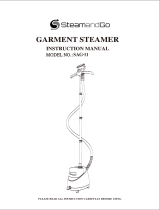 Steam and Go SAG11-Black Operating instructions
Steam and Go SAG11-Black Operating instructions
-
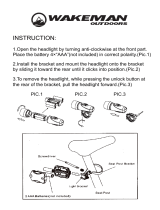 Wakeman Outdoors HW5700016 Operating instructions
Wakeman Outdoors HW5700016 Operating instructions
-
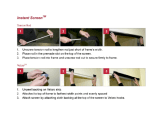 Snavely Forest DS83937 Operating instructions
Snavely Forest DS83937 Operating instructions
-
Endon 91781 User manual
-
Handicare VR2DT User manual
-
Permobil C300 User manual
-
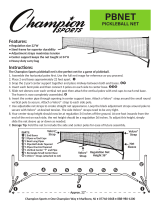 Champion Sports PBNET Owner's manual
Champion Sports PBNET Owner's manual
-
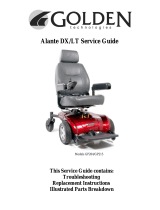 Golden Technologies GP204 User manual
Golden Technologies GP204 User manual
-
Invacare Pronto M41 User manual
-
Invacare STORM User manual












































































































